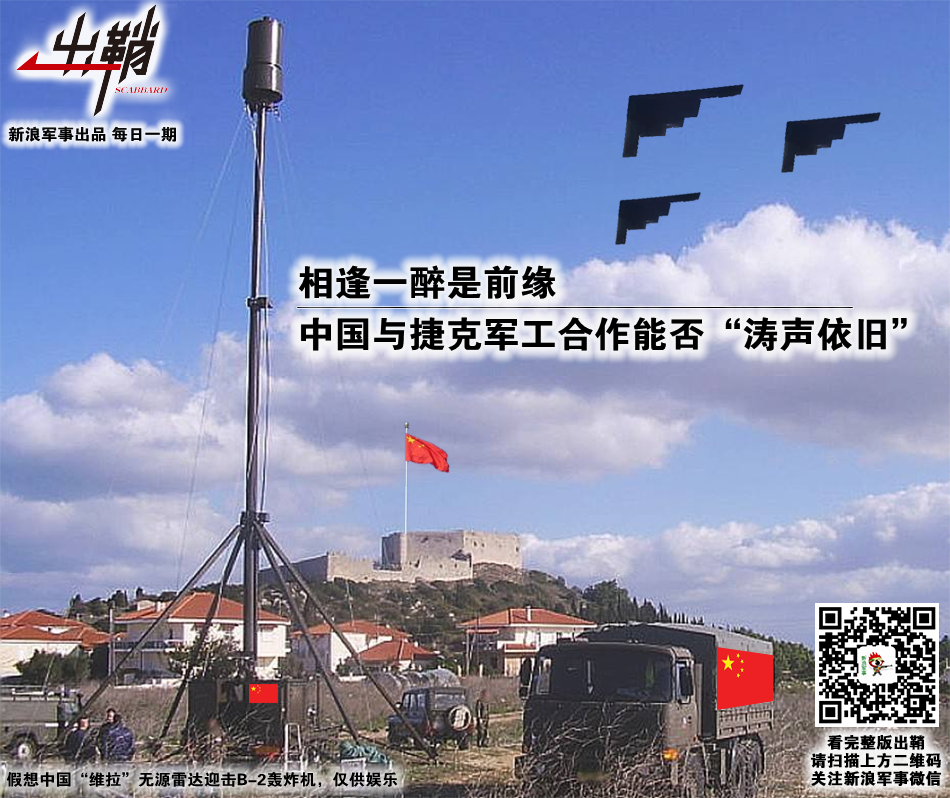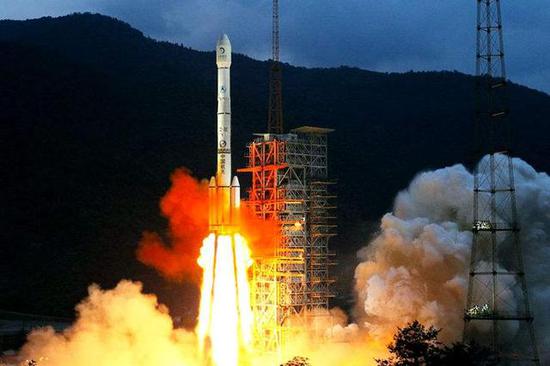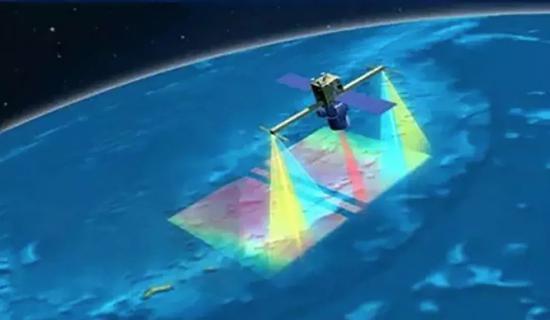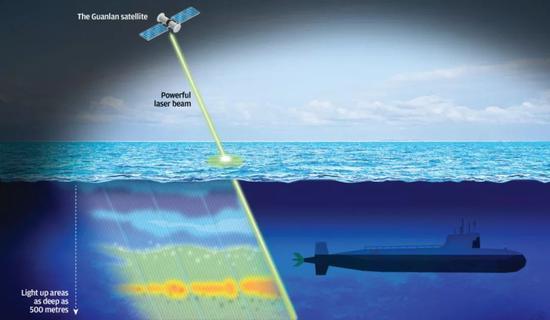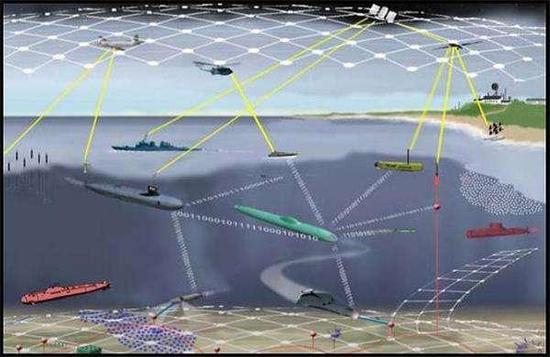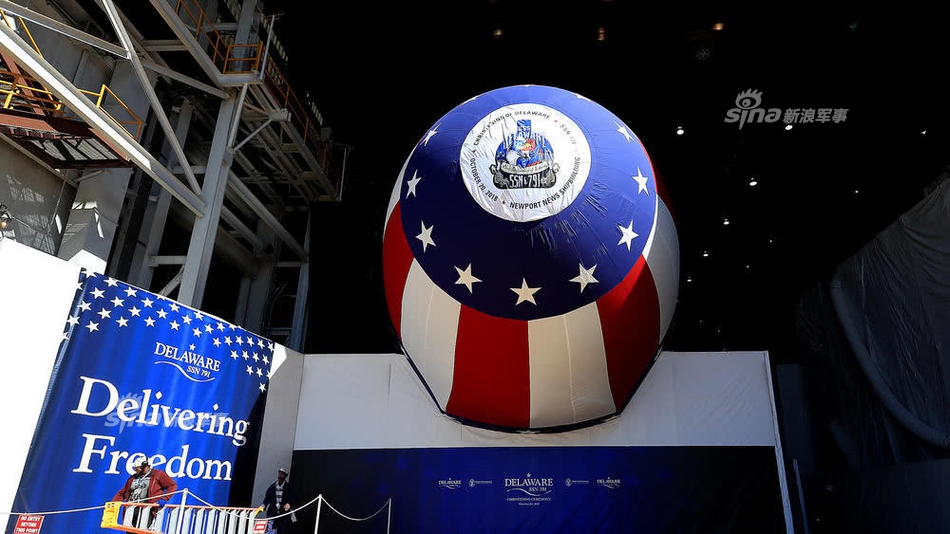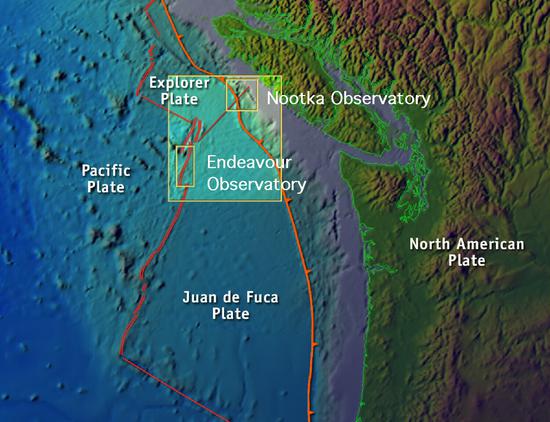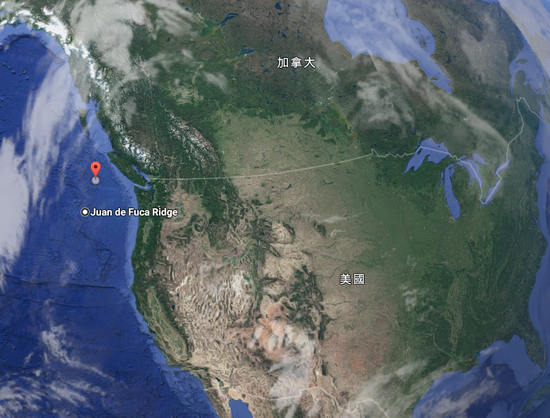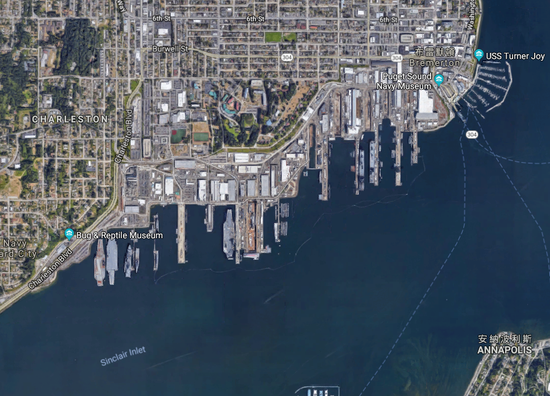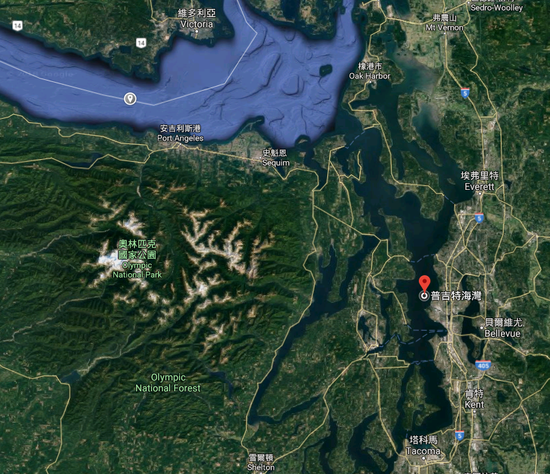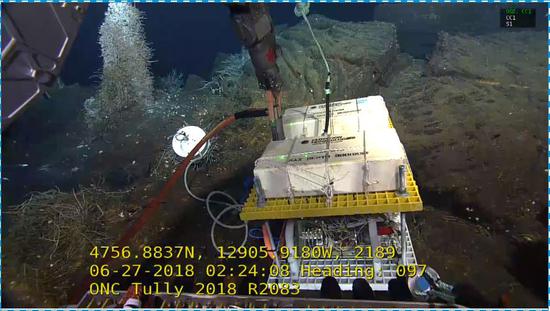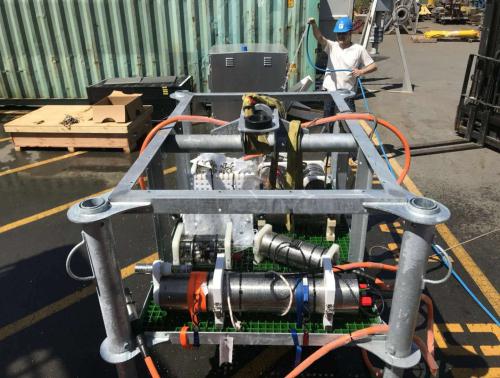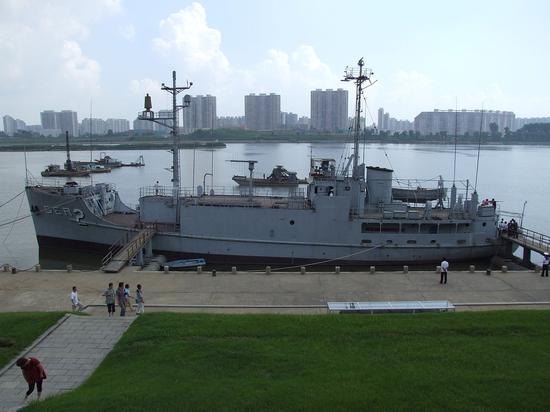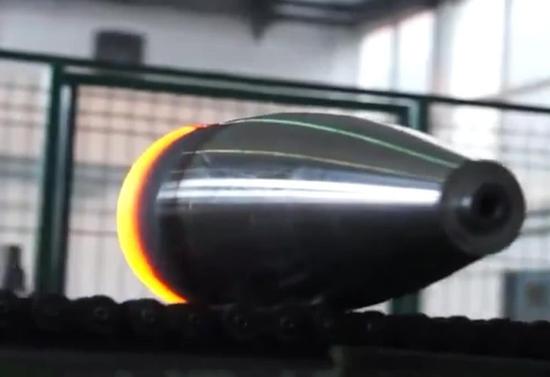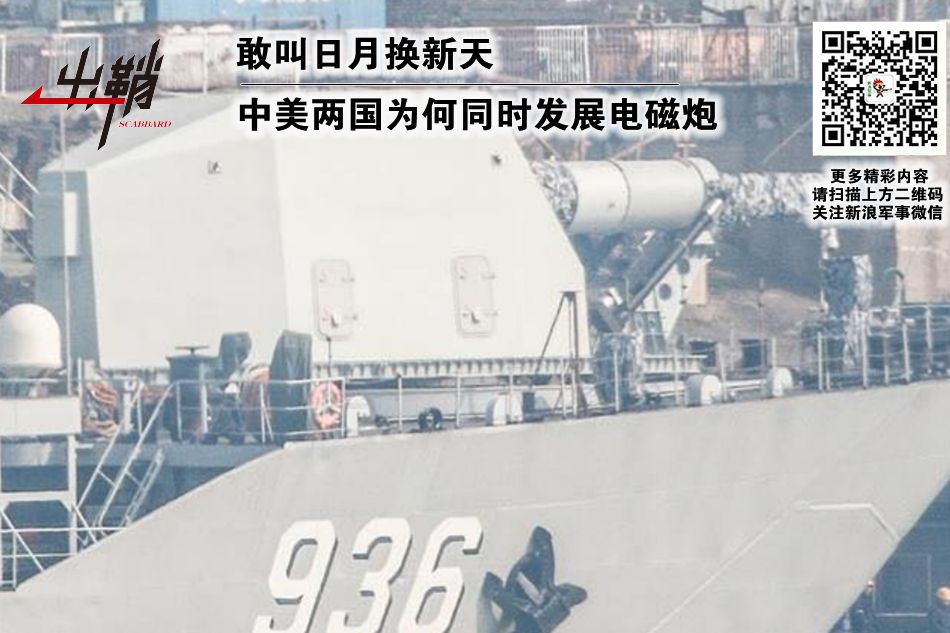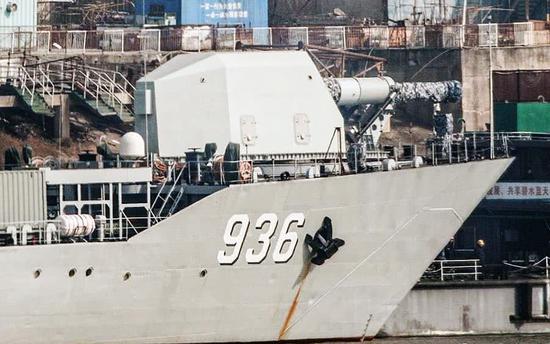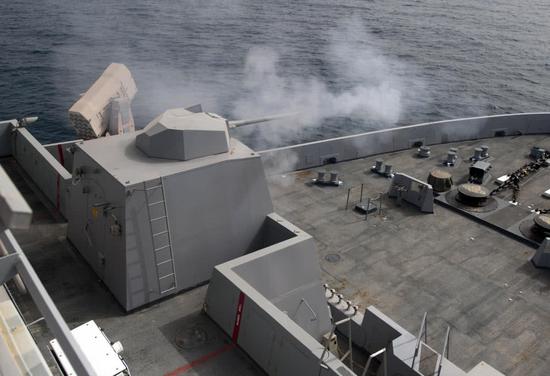HUAT OR NOT? Canada installed a network of Chinese made Ocean Monitoring Devices just outside US Navy's Submarine bases!
https://mil.news.sina.com.cn/china/2018-10-23/doc-ihmuuiyw1234790.shtml
美国潜艇基地外 多了几个中国造海洋监测盒子(图)
美国潜艇基地外 多了几个中国造海洋监测盒子(图)
168
我军093B未来大敌!美国第18艘弗吉尼亚级核潜艇下水1/11
查看原图图集模式
2018年10月19日,美国海军为全新的攻击型核潜艇特拉华号举行了下水命名仪式,这使其弗吉尼亚攻击型核潜艇已下水的数量增加至18艘。核潜艇被军迷们亲切地称为大黑鱼,而在攻击型核潜艇的批量建造方面,美国的能力是独步全球的。(图片来源:云上的空母)











原标题:加拿大在美国潜艇基地外海布设了中国产海洋监测设备
[文/观察者网 于宝辰]香港《南华早报》10月22日报道,今年的6月27日,加拿大在胡安·德·富卡海岭安装了四个中国生产的海洋监测设备,安装位置正对着美军西雅图海军基地的咽喉路线。
这些设备可以监测海水成分与离子浓度等信息,将数据实时传输到加拿大海洋网络(ONC)和中科院三亚控制中心,可以用于研究海流和海洋气候,以及海水浮力和水声传播背景。
报道称,这些监测设备由加拿大海岸警卫队的一艘无人潜水器安置在胡安·德·富卡海岭(Juan de Fuca Ridge)的奋进段(Endeavour),这里的正东面约300公里就是美国和加拿大共同拥有的狭窄海峡胡安·德·富卡海峡。这里是世界上最繁忙的水道之一。
胡安·德·富卡海岭及奋进段示意图
奋进段海岭(红色标志)与北美大陆的相对位置
尤为关键的是,
进入海峡向东再转向南就进入了西雅图毗邻的普吉特湾。此处是美国在东北太平洋地区重要的航母与核潜艇基地,拥有美国在西北海岸唯一能容纳航母的干船坞和建造核潜艇的造船厂。美国航空母舰和潜艇都需要经过胡安·德·富卡海峡出入基地。
普吉特湾海军造船厂卫星照片,可以看到港内的航母
胡安·德·富卡海峡(白色标志)与普吉特湾(红色标志)的位置关系
此次布设的四个检测设备为中国科学院下属的三亚深海科学与工程研究所研制,设备的所有权也属于该所。据深海所官方网站消息称,
这四个检测设备包括底部生物地球化学原位实验系统(BBES)、水下伏安分析仪(UVA),深海所与光电院共同研发的水下激光衰荡光谱仪(UCRDS),以及深海所与大化所共同研发的水下紫外拉曼光谱仪(UURS)。
加拿大无人潜水器将监控设备安放在海底(图片来源:中科院深海所)
这些设备的功能包括对深海和紧贴海底的海水(底水)进行化学成分分析,监测水中带电离子和水中溶存气体的变化情况等,在军用和民用两方面都有广泛的用途:可以
监测水体污染,探测海底矿产资源(如可燃冰,锰结核)和海洋渔业资源。也可以监控具有战略意义的海流、潮汐和气候情况。对潜艇作战而言,则可以收集与潜艇浮力与水声传播环境相关的海水成分和分布等。
监测设备正在接受地面测试(图片来源:中科院深海所)
目前,加拿大在海底观测系统网络上的技术水平处于世界领先地位。与加拿大合作无疑对中国海洋监测系统的开发和部署有着不小的帮助。据深海所官网消息称,
该监测器计划收到中科院重点部署项目“ONC海底观测网观测设备研发与运行”资助。ONC由从太平洋东北部到北极的海洋检测设备组成,由加拿大的不列颠哥伦比亚省维多利亚大学负责运营。ONC主要是一个科研机构,但也有一定的防务功能,去年加拿大国家广播公司曾经报道了ONC帮助加拿大军方监控北极水域的消息。
《南华早报》的报道援引一些对华研究网站的评论称,这一举措可能是中国建立自己的海洋监测系统的先导。同时,加拿大准备在多大程度上向中国开放其海洋监测设备网络,以及为何这么做,也是一件令人疑惑的事情。
广东外语外贸大学加拿大研究中心专职研究员陈洪桥就此表示,
不管设备的最终用途是什么,其敏感性是毋庸置疑的。深海监测网络与国家安全密切相关,这方面的合作非常罕见。陈洪桥推测说,这样的权限只可能来自“双方最高权力的沟通”。
ONC和中科院方面都没有就这些设备的具体情况和作用做出评论,美国国务院也对此表示“无可奉告”。
美国海军一向对海洋环境研究采取积极态度。其“科考船”常以自由航行为名出入别国近海,1968年1月23日,美国海军“普韦布洛”号“通用环境研究舰”在元山港外海执行谍报任务时遭到朝鲜人民军逮捕,酿成著名的“普韦布洛号事件”。
目前陈列在朝鲜的“普韦布洛”号,由于美国海军仍未将其除籍,目前算是一艘被朝鲜扣押的“战俘”
据中国国家海洋局的消息,2013年中国和加拿大曾经签署了关于合作开展海洋观测的谅解备忘录,但一些实际项目则到最近才开始启动。
有些巧合的是,这些监测设施的部署时间正在美国对加拿大征收钢铝关税之后一个月。目前,美国不但与中国,而且与包括加拿大在内的不少国家陷入贸易战中,虽然10月1日美国与墨西哥,加拿大成功签署了新的《美加墨协议》,取代了特朗普认为“不公平”的《北美自由贸易协议》,但钢铝关税并未就此取消。
此前观察者网曾有报道称,加拿大总理特鲁多在10月15日向媒体表示,加拿大方面拒绝了美国提出的严格限制对华贸易的要求,保留了对世界第二大经济体开展贸易谈判的权利。
There are several Chinese marine monitoring boxes outside the US submarine base (Figure)
There are several Chinese marine monitoring boxes outside the US submarine base (Figure)
168
Our army 093B future enemy! The 18th Virginia-class nuclear submarine launched in the United States 1/11
View the original map mode
On October 19, 2018, the US Navy held a water naming ceremony for the new attack-type nuclear submarine Delaware, which increased the number of launched Virginia-type attack submarines to 18. Nuclear submarines are affectionately known as big black fish by military enthusiasts, and in the mass construction of attack-type nuclear submarines, the United States is uniquely global. (Source: Empty mother on the cloud)
Original title: Canada has set up Chinese-made marine monitoring equipment outside the US submarine base.
[Text / Observer Network in Baochen] Hong Kong "South China Morning Post" reported on October 22, this year's June 27, Canada installed four Chinese-made marine monitoring equipment in Juan de Fuca Ridge, installed The position is directly opposite the throat route of the US Navy base in Seattle.
These devices can monitor information such as seawater composition and ion concentration, and transmit data to the Canadian Ocean Network (ONC) and the Sanya Control Center of the Chinese Academy of Sciences in real time. They can be used to study ocean currents and oceanic climates, as well as seawater buoyancy and underwater acoustic propagation backgrounds.
According to reports, these monitoring devices were placed in the Endeavour of the Juan de Fuca Ridge by an unmanned submarine of the Canadian Coast Guard, about 300 km east of it. The narrow strait Juan de Fuca Strait shared by the United States and Canada. It is one of the busiest waterways in the world.
Schematic diagram of Juan de Fuka Hailing and Fenjin section of Juan de Fukahailing and Ende segment
The relative position of the Endeavour Ridge (red sign) and the North American continent
Particularly critical is that entering the strait and heading east again turns into the Puget Bay adjacent to Seattle. This is the important US aircraft carrier and nuclear submarine base in the Northeast Pacific. It has the only dry dock in the United States on the northwest coast that can accommodate aircraft carriers and shipyards that build nuclear submarines. Both US aircraft carriers and submarines need to go through the Juan de Fuca Strait.
Satellite photos of the Puget Bay Naval Shipyard, you can see the satellite image of the aircraft carrier Puget Bay Naval Shipyard in the port, you can see the aircraft carrier in the port
Positional relationship between Juan de Fuca Strait (white sign) and Puget Sound (red sign)
The four testing equipments that were deployed this time were developed by the Sanya Deep Sea Science and Engineering Research Institute under the Chinese Academy of Sciences, and the ownership of the equipment belongs to the institute. According to the official website of the Deep Sea, the four testing equipments include the bottom biogeochemical in situ experimental system (BBES), the underwater voltammetric analyzer (UVA), and the underwater laser ring-down spectrometer jointly developed by the Deep Sea and the Optoelectronics Institute. (UCRDS), and the underwater UV Raman spectrometer (UURS) jointly developed by Deep Sea and Dahua.
Canadian unmanned submersibles placed surveillance equipment on the seabed (Source: Deep Sea Institute of the Chinese Academy of Sciences) Canadian unmanned submersibles placed surveillance equipment on the seabed (Source: Deep Sea Institute, Chinese Academy of Sciences)
The functions of these devices include chemical composition analysis of deep sea and seawater (bottom water) close to the seabed, monitoring of changes in charged ions and dissolved gases in water, etc., and are widely used in both military and civilian applications: water bodies can be monitored Pollution, detection of seabed mineral resources (such as combustible ice, manganese nodules) and marine fishery resources. Strategic ocean currents, tides and climate conditions can also be monitored. For submarine operations, it is possible to collect seawater components and distribution related to submarine buoyancy and underwater acoustic propagation.
Monitoring equipment is undergoing ground testing (Source: Chinese Academy of Sciences Deep Sea Institute) monitoring equipment is undergoing ground testing (Source: Chinese Academy of Sciences Deep Sea Institute)
At present, Canada's technology level on the seabed observing system network is a world leader. Cooperation with Canada will undoubtedly help the development and deployment of China's marine monitoring system. According to the official website of the Shenzhen Stock Exchange, the monitor plans to receive funding from the Chinese Academy of Sciences' key deployment project “Development and Operation of Observation Equipment for ONC Undersea Observation Network”. The ONC consists of marine detection equipment from the northeastern Pacific to the Arctic and is operated by Victoria University of British Columbia, Canada. ONC is mainly a research institution, but it also has certain defense functions. Last year, the Canadian National Broadcasting Corporation reported that ONC helped the Canadian military monitor the Arctic waters.
The South China Morning Post reported that some of the comments on China's research website said that this move may be the forerunner of China's establishment of its own marine monitoring system. At the same time, the extent to which Canada is prepared to open its network of marine monitoring equipment to China and why it is done is also a puzzling thing.
Chen Hongqiao, a full-time researcher at the Canadian Studies Center of Guangdong University of Foreign Studies, said that no matter what the end use of the equipment is, its sensitivity is unquestionable. Deep-sea monitoring networks are closely related to national security, and cooperation in this area is very rare. Chen Hongqiao speculated that such authority may only come from "the communication of the highest power of both parties."
Neither the ONC nor the Chinese Academy of Sciences commented on the specific situation and role of these devices. The US State Department also expressed "no comment".
The US Navy has always taken a positive attitude toward marine environmental research. Its "Science Ship" often entered the offshore of other countries in the name of free navigation. On January 23, 1968, the US Navy "Pueblo" "General Environmental Research Ship" was subjected to an espionage mission outside the Yuanshan Port. The Korean People’s Army arrested and made the famous “Pueblo incident”.
The "Pueblo" currently on display in North Korea, because the US Navy has not yet removed it, is currently a "prisoner of war" seized by North Korea.
According to the China National Oceanic Administration, in 2013 China and Canada signed a memorandum of understanding on cooperation in ocean observations, but some actual projects have only recently started.
Coincidentally, the deployment time of these monitoring facilities is one month after the United States imposes a steel-aluminum tariff on Canada. At present, the United States has not only entered into a trade war with China, but also with many countries including Canada. Although the United States and Mexico, Canada successfully signed a new US-Canada Agreement on October 1, replacing Trump’s view. "Unfair" North American Free Trade Agreement, but steel and aluminum tariffs have not been cancelled.
Earlier, Observer Network reported that Canadian Prime Minister Trudeau told the media on October 15 that the Canadian side rejected the US’s strict restrictions on trade with China and retained trade negotiations with the world’s second largest economy. right.


















